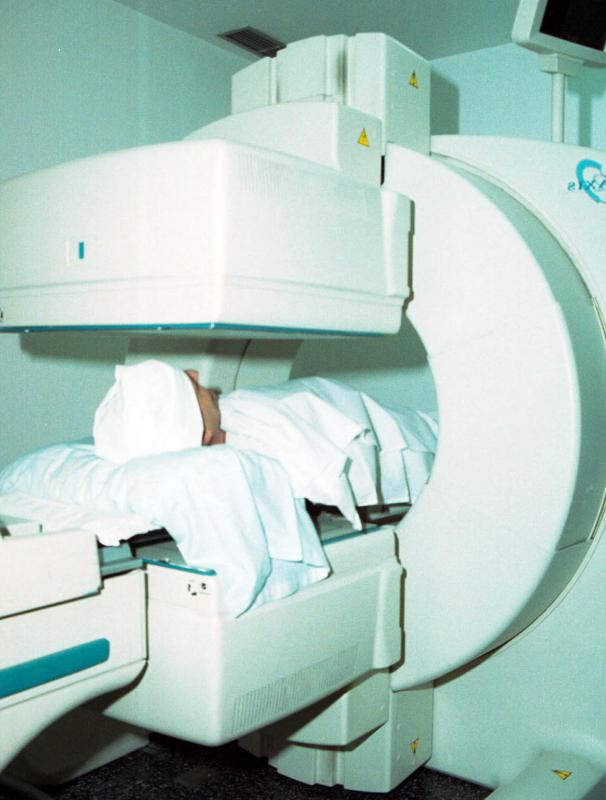At TheHealthBoard, we're committed to delivering accurate, trustworthy information. Our expert-authored content is rigorously fact-checked and sourced from credible authorities. Discover how we uphold the highest standards in providing you with reliable knowledge.
What is an Open MRI?
An open MRI is an advanced form of the original magnetic resonance imaging (MRI) device. Used since the 1980s, an MRI scan sends magnetic and radio waves through the human body at as much as 30,000 times the strength of the Earth’s magnetic field. A regular MRI is a large, enclosed magnet in which patients lie still during an MRI scan, but an open MRI is a newer system that allows patients to stand up in an open magnet device during scanning.
Traditional MRI scanners give patients little room to move and be comfortable. An open MRI offers an alternative to the often-distressing, loud MRI exams. An open MRI is a device that allows patients the choice to stand freely while being scanned. In the open MRI devices, patients can watch television and see their doctors and nurses. This option provides an appealing alternative for patients who are anxious, claustrophobic, elderly or young, as well as those who are obese.

An open MRI was developed so that a patient stands lightly cradled by the MRI system, and an arm-like device tracks over the patient’s body from a short distance. This way, a patient does not have to be entered into an enclosed casket-like device, which resembles the traditional MRI scanner. Open MRI devices have proved to be popular and effective for many patients.

An MRI scan and its radio waves alter the body’s atoms by repositioning the nuclei. As the body’s atoms shift, they give off new radio waves that are tracked by the scanner and produced into a picture on a computer. An MRI scan produces pictures of any tissue in the body. Tissue that contains little hydrogen, such as bones, is seen as a dark area, and tissue that possesses the most hydrogen atoms, such as soft tissue, turns out lighter.

By producing these detailed pictures of various bodily tissues, an MRI scan is one of the best techniques for finding tumors and for examining the brain and spinal cord. Thus, MRI scanning has become one of the best techniques in determining abnormalities in brain tissue. It also is excellent for finding heart defects and other potential complications of the body’s internal organs.
AS FEATURED ON:
AS FEATURED ON:













Discussion Comments
I close my eyes and pray and sometimes sing in my head. It gets me through almost anything.
The traditional tunnel MRI machine could wrack the nerves of the most confident patient. It is very confining, however an open machine gives the patient room to breathe, so to speak.
Post your comments